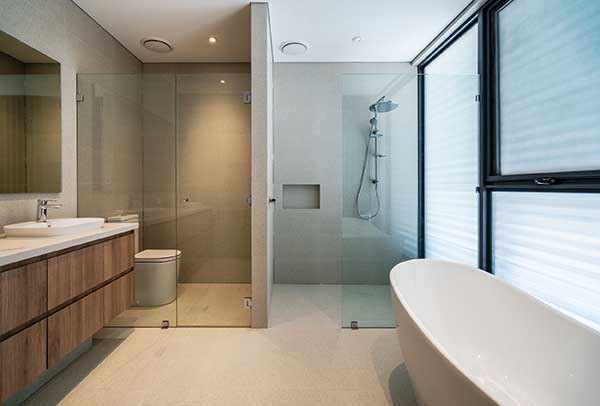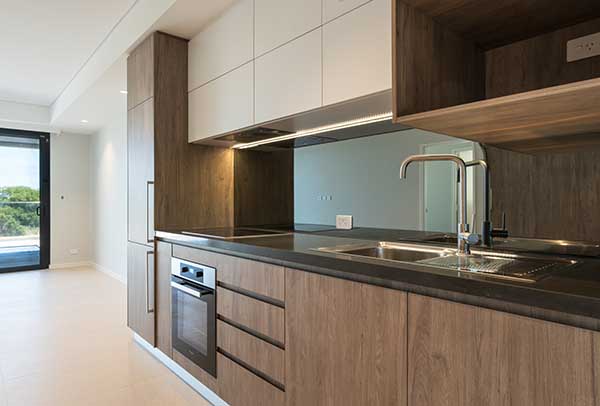Toughened Glass (also known as tempered glass) is used in applications because of its durability and strength. It can withstand high levels of force without breaking into sharp pieces like other forms of glass would do under the same circumstances. This makes it great for use in shower screens, pool fencing, balustrade, car windows, skylights and much more!
What is Toughened glass?
Toughened glass is glass that has undergone a thermal treatment (heated in a furnace) to make it stronger and more durable.
How is Toughened Glass Made?
Standard sheets of glass are fed into a furnace at approximately 600 degrees, where they are moved backwards and forwards on rollers continuously to give an even distribution of heat and minimise any distortion. During this process, the outer surface of the glass undergoes a thermal reaction that creates new molecular bonds to strengthen the sheet.
From the heated part of the furnace, the glass is transferred to the “quench” part of the furnace where it is cooled. This creates an outer layer harder than the original sheet of glass, so that if it breaks, it shatters into smaller pieces rather than large, sharp shards. This process leads to an increase in glass strength by up to 500%, which is why toughened glass has become a popular and trusted building material with many applications.
Toughened Glass vs Standard Glass
When standard glass breaks, it breaks into shards that can be extremely sharp and dangerous. Toughened glass does not break into shards but shatters into small fragments, vastly reducing the likelihood of injury.
Because toughened glass is up to five times stronger than regular annealed glass, it’s more resilient to physical damage and impact. Toughened glass is extremely resistant to fluctuations in heat because it has a low coefficient of thermal expansion which results in minimal deformation when heated or cooled quickly. This makes it a practical choice for splashbacks positioned near stove tops.
Where is Toughened Glass Used
The properties of toughened glass make it a suitable material for many applications; the most common being shower screens in bathrooms, splashbacks in kitchens and bathrooms, balustrade and pool fencing. Some other uses that are possible with toughened glass include car windscreens, canopies, roofs, framed glass doors to buildings and signage outside of shops or businesses.


The true strength of toughened or tempered safety glass is in its resilience and ability to absorb impact energy before fracturing. It can be used anywhere that a traditional, annealed glass cannot be used for safety reasons.
Toughened Glass FAQ’s
How can you tell if glass is tempered?
Toughened glass will usually have a printed label near the edge of the glass with details of the glass standard as relevant to the Country’s specific glass standards. This is usually ceramic ink applied to the glass via a silk screen prior to furnacing. This printed label then fuses and becomes part of the glass during the toughening/heating process.
Is Tempered glass breakable?
Yes, although it is far safer than annealed glass when broken. The impact energy is dispersed over a larger area and the chance of injury is greatly reduced compared to standard plate glass.
Can I cut tempered glass?
No not with a glass cutter. Toughened glass cannot be cut with a normal glass cutter, it will shatter during the process.
Can tempered glass be recycled?
Yes. Although it should be kept separate to normal glass. Toughened glass cannot be recycled together with standard glass as their properties and melting temperatures are different.
Is Tempered Glass more expensive than regular plate glass?
Yes, toughening is an extra process that is applied to standard glass to make it stronger.

